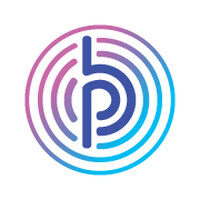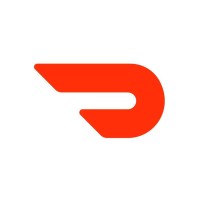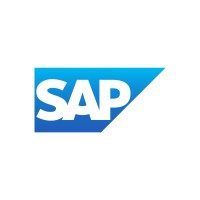
Pitney Bowes Company Cyber Security Posture
pitneybowes.comPitney Bowes (NYSE: PBI) is a technology-driven company that provides SaaS shipping solutions, mailing innovation, and financial services to clients around the world – including more than 90 percent of the Fortune 500. Small businesses to large enterprises, and government entities rely on Pitney Bowes to reduce the complexity of sending mail and parcels. For additional information, visit Pitney Bowes at www.pitneybowes.com.
Pitney Bowes Company Details
pitney-bowes
12906 employees
124969.0
511
Software Development
pitneybowes.com
Scan still pending
PIT_3385852
In-progress
Between 900 and 1000
This score is AI-generated and less favored by cyber insurers, who prefer the TPRM score.
 Pitney Bowes Global Score
Pitney Bowes Global Score.png)

Pitney Bowes Company Scoring based on AI Models
| Model Name | Date | Description | Current Score Difference | Score |
|---|---|---|---|---|
| AVERAGE-Industry | 03-12-2025 | This score represents the average cybersecurity rating of companies already scanned within the same industry. It provides a benchmark to compare an individual company's security posture against its industry peers. | N/A | Between 900 and 1000 |
Pitney Bowes Company Cyber Security News & History
| Entity | Type | Severity | Impact | Seen | Url ID | Details | View |
|---|---|---|---|---|---|---|---|
| Pitney Bowes | Ransomware | 85 | 3 | 05/2020 | PIT1930291222 | Link | |
Rankiteo Explanation : Attack with significant impact with internal employee data leaksDescription: Package and mail delivery giant Pitney Bowes had suffered a second ransomware attack in the past seven months. A ransomware gang known as Maze published a blog post claiming to have breached and encrypted the company's network. The Maze crew provided proof of access in the form of 11 screenshots portraying directory listings from inside the company's computer network. Being the victim of a human-operated ransomware gang is bad enough, but getting hit by two different gangs raised serious questions on them. | |||||||
Pitney Bowes Company Subsidiaries

Pitney Bowes (NYSE: PBI) is a technology-driven company that provides SaaS shipping solutions, mailing innovation, and financial services to clients around the world – including more than 90 percent of the Fortune 500. Small businesses to large enterprises, and government entities rely on Pitney Bowes to reduce the complexity of sending mail and parcels. For additional information, visit Pitney Bowes at www.pitneybowes.com.
Access Data Using Our API

Get company history
.png)
Pitney Bowes Cyber Security News
Doceo Expands its Market Presence in Baltimore with Acquisition of Unison Business Solutions
PRNewswire/ -- Doceo, a leading provider of business technology solutions, announces the acquisition of Unison Business Solutions, ...
Expanding Connecticut’s Tech Workforce
The Connecticut Tech Talent Accelerator, an idea of the state's Office of Workforce Strategy, was launched in 2022, to create pathways from the state's public ...
Ransomware Hits Pitney Bowes For Second Time In Less Than A Year
International mailing and technology giant Pitney Bowes recently confirmed a ransomware attack. It's the firm's second in just seven months.
Shipping Giant Pitney Bowes’ Services Stalled by Ransomware Attack
Mailing services company Pitney Bowes, which handles shipping technology for more than 1.5 million clients around the globe, was hit with a ransomware attack ...
JPMorgan’s CFO says succession planning for CEO Jamie Dimon is ‘strong as ever’
Good morning. CEO succession planning can be challenging as the board must identify a leader with the right skills and experience.
Verizon's ICSA Labs gives seven companies information security testing award
ICSA Labs, an independent division of Verizon, honored seven companies with the Excellence in Information Security Testing Award.
Top 10: CISOs
Microsoft's Global CISO since January 2024, Igor Tsyganskiy has an extensive background in technology and security. In his role today, ...
Shipping giant Pitney Bowes hit by ransomware
Shipping tech giant Pitney Bowes has confirmed a cyberattack on its systems. The company said in a statement that its systems were hit by a ...
Like Voldemort, ransomware is too scary to be named
Some companies worry that acknowledging a ransomware attack could land them on the front page, alarm investors and drive down their share price.

Pitney Bowes Similar Companies

Bosch
The Bosch Group is a leading global supplier of technology and services. It employs roughly 417,900 associates worldwide (as of December 31, 2024). According to preliminary figures, the company generated sales of 90.5 billion euros in 2024. Its operations are divided into four business sectors: Mobi

Bosch USA
The Bosch Group’s strategic objective is to create solutions for a connected life. Bosch improves quality of life worldwide with innovative products and services that are "Invented for life" and spark enthusiasm. Podcast: http://bit.ly/beyondbosch Imprint: https://www.bosch.us/corporate-informatio

Cadence
Cadence is a pivotal leader in electronics and system design, building upon more than 30 years of computational software expertise. The company applies its underlying Intelligent System Design strategy to deliver software, hardware and IP that turn design concepts into reality. Cadence customers are

DoorDash
At DoorDash, our mission to empower local economies shapes how our team members move quickly and always learn and reiterate to support merchants, Dashers and the communities we serve. We are a technology and logistics company that started with door-to-door delivery, and we are looking for team membe

Microsoft
Every company has a mission. What's ours? To empower every person and every organization to achieve more. We believe technology can and should be a force for good and that meaningful innovation contributes to a brighter world in the future and today. Our culture doesn’t just encourage curiosity; it

SAP
SAP is the leading enterprise application and business AI company. We stand at the intersection of business and technology, where our innovations are designed to directly address real business challenges and produce real-world impacts. Our solutions are the backbone for the world’s most complex and

Frequently Asked Questions
Explore insights on cybersecurity incidents, risk posture, and Rankiteo's assessments.
Pitney Bowes CyberSecurity History Information
How many cyber incidents has Pitney Bowes faced?
Total Incidents: According to Rankiteo, Pitney Bowes has faced 1 incident in the past.
What types of cybersecurity incidents have occurred at Pitney Bowes?
Incident Types: The types of cybersecurity incidents that have occurred incident Ransomware and Malware.
How does Pitney Bowes detect and respond to cybersecurity incidents?
Detection and Response: The company detects and responds to cybersecurity incidents through third party assistance with Third-party consultant.
Incident Details
Can you provide details on each incident?

Incident : Malware Attack
Title: Pitney Bowes Malware Attack
Description: The Shipping tech giant Pitney Bowes has confirmed in a statement that its systems were hit by a malware attack that encrypted information on its systems. The company has seen no evidence that customer or employee data has been improperly accessed. But many of its internal systems are offline, causing disruption to client services and other corporate processes. The company said it’s working with a third-party consultant to address the issue. But it’s not immediately known what kind of ransomware encrypted its systems.
Type: Malware Attack

Incident : Ransomware
Title: Pitney Bowes Second Ransomware Attack
Description: Package and mail delivery giant Pitney Bowes had suffered a second ransomware attack in the past seven months. A ransomware gang known as Maze published a blog post claiming to have breached and encrypted the company's network. The Maze crew provided proof of access in the form of 11 screenshots portraying directory listings from inside the company's computer network.
Type: Ransomware
Threat Actor: Maze
Motivation: Financial
What are the most common types of attacks the company has faced?
Common Attack Types: The most common types of attacks the company has faced is Ransomware.
Impact of the Incidents
What was the impact of each incident?

Incident : Malware Attack PIT24917423
Systems Affected: Internal systems
Downtime: ['Client services', 'Corporate processes']

Incident : Ransomware PIT1930291222
Systems Affected: Computer network
Brand Reputation Impact: Significant
Which entities were affected by each incident?
Response to the Incidents
What measures were taken in response to each incident?

Incident : Malware Attack PIT24917423
Third Party Assistance: Third-party consultant
How does the company involve third-party assistance in incident response?
Third-Party Assistance: The company involves third-party assistance in incident response through Third-party consultant.
Data Breach Information
What type of data was compromised in each breach?

Incident : Ransomware PIT1930291222
Data Encryption: ['Computer network']
Ransomware Information
Was ransomware involved in any of the incidents?
Post-Incident Analysis
What is the company's process for conducting post-incident analysis?
Post-Incident Analysis Process: The company's process for conducting post-incident analysis is described as Third-party consultant.
Additional Questions
General Information
Who was the attacking group in the last incident?
Last Attacking Group: The attacking group in the last incident was an Maze.
Impact of the Incidents
What was the most significant system affected in an incident?
Most Significant System Affected: The most significant system affected in an incident was Internal systems and Computer network.
Response to the Incidents
What third-party assistance was involved in the most recent incident?
Third-Party Assistance in Most Recent Incident: The third-party assistance involved in the most recent incident was Third-party consultant.
What Do We Measure?
















Every week, Rankiteo analyzes billions of signals to give organizations a sharper, faster view of emerging risks. With deeper, more actionable intelligence at their fingertips, security teams can outpace threat actors, respond instantly to Zero-Day attacks, and dramatically shrink their risk exposure window.
These are some of the factors we use to calculate the overall score:
Identify exposed access points, detect misconfigured SSL certificates, and uncover vulnerabilities across the network infrastructure.
Gain visibility into the software components used within an organization to detect vulnerabilities, manage risk, and ensure supply chain security.
Monitor and manage all IT assets and their configurations to ensure accurate, real-time visibility across the company's technology environment.
Leverage real-time insights on active threats, malware campaigns, and emerging vulnerabilities to proactively defend against evolving cyberattacks.




